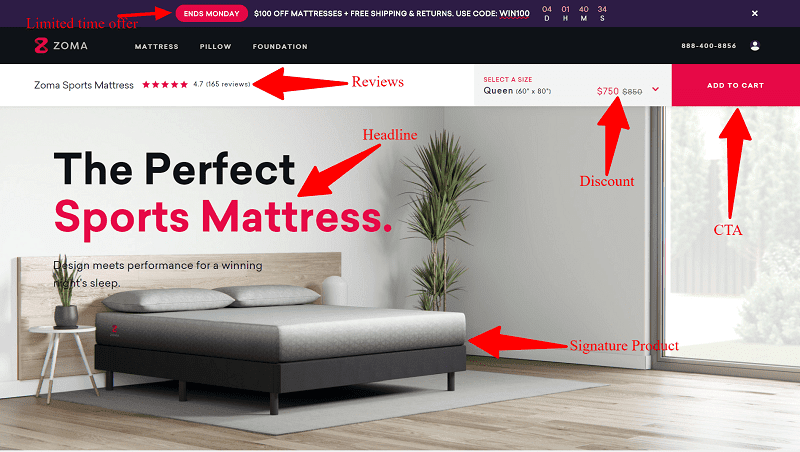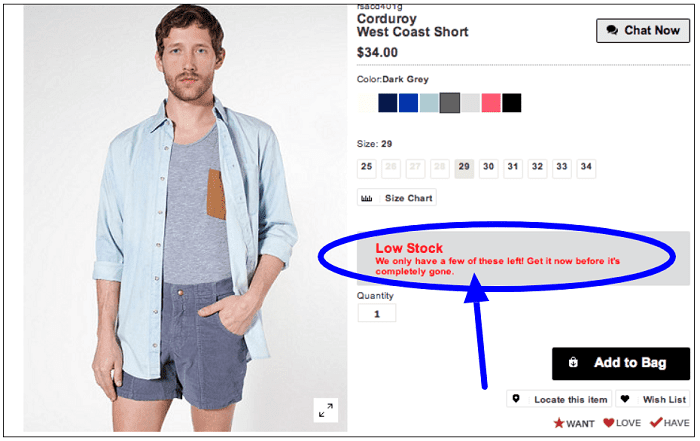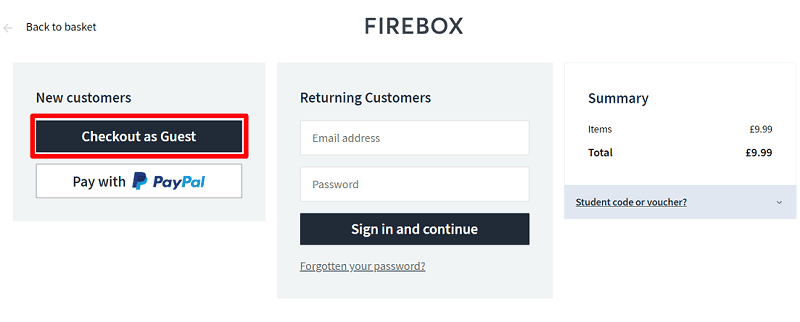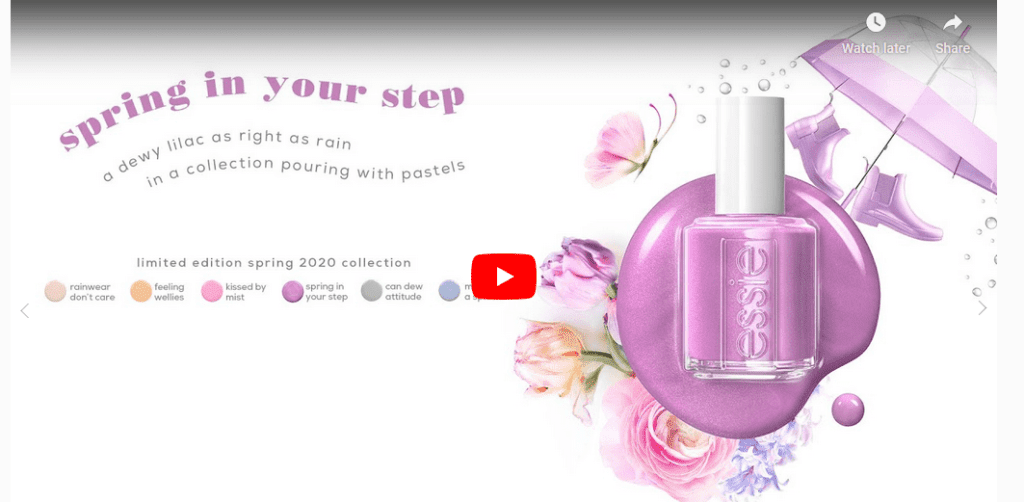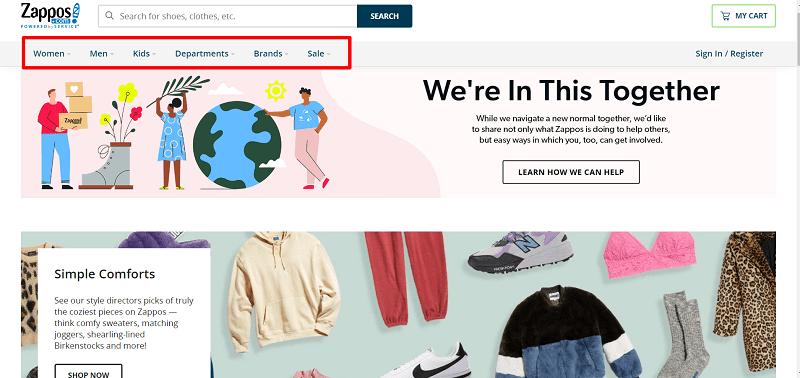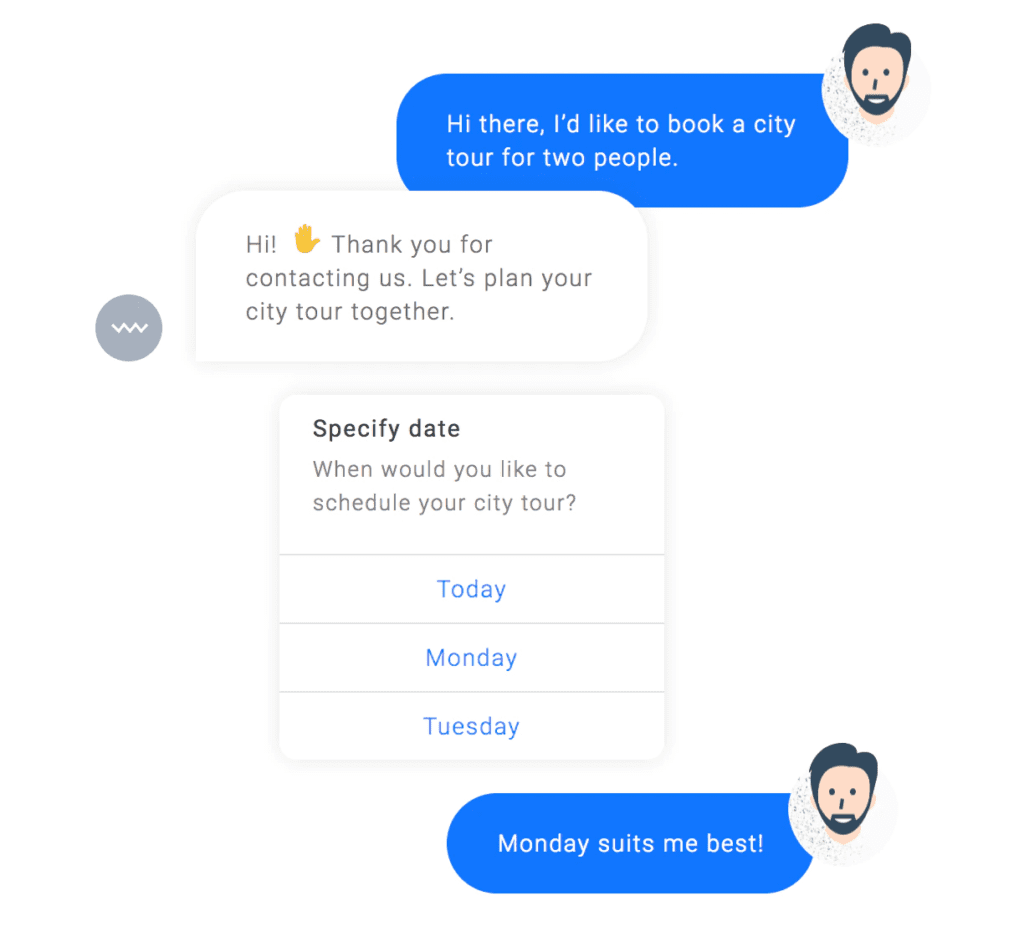

With 24 million ecommerce stores globally scrambling for customers, competition is tougher than ever before.
We expect ecommerce sales to reach almost $30 trillion by 2023, and everyone wants to get a piece of the pie. You must differentiate your brand to make a decent revenue for your business to stand any chance of surviving past it’s fifth year.
In a highly competitive environment, maximizing sales from your traffic is crucial.
To do that, you must optimize your store to drive conversions.
Today, we will explore 14 ecommerce optimization strategies to increase conversions and sales.
What is an Ecommerce Conversion Rate?
A conversion rate is the number of store visitors who complete a pre-defined desired action on a page, expressed as a percentage. On average, ecommerce conversion rates hover between 1-2%.
Examples of typical conversions for an ecommerce store
- An online sale
- A user adding a product to their cart
- A user adding an item to their wishlist
- Email signups
- Social media shares
- Any KPI that’s valuable to the company
Conversion rate optimization (CRO) can be conducted on landing pages, category pages, or any customer touch point.
The following are 14 steps that can help increase your online store’s conversion rate.
14 Ecommerce Optimization Strategies
Your store’s conversion rates don’t have to remain average. Use the following optimization strategies to increase them past 2%.
1. Optimize your homepage
Your homepage is your virtual storefront. A majority of your site visitors will arrive on your homepage first.
The more vibrant it is, the more conversion paths you create for visitors. Homepage essentials include:
- The main banner: Display your signature product front and center, so shoppers don’t miss it.
- Headline: Reveal your philosophy and unique selling proposition (USP) to set your brand apart.
- Featured products: Showcase your top-selling products prominently to new shoppers.
- Image navigation: Product images must be clickable so customers can sample them straight away.
- Ratings and reviews: Put shoppers at ease buy showing product ratings and reviews.
- Product description: Tease buyers with a brief description of your products.
- Prominent search bar: Make your search bar big, so shoppers easily search for what they want.
Zoma Sleep Mattresses has a dynamic modern homepage with everything from their signature product to reviews and more.
2. Improve the product copy
Product descriptions are critical when it comes to boosting your store’s conversions.
First, align your copy to your buyer persona. If you don’t create copy with your ideal customer in mind, you will produce general, feeble descriptions that aren’t convincing. Use words and phrases that they use because they resonate with them.
Next, be clear and concise. Sensory words are great for creating alluring mental pictures without using too many words.
Go beyond surface features and describe the deeper benefits of your product. Massage your USP into the copy to differentiate it from competitors products.
Create descriptions that touch on the following points:
- Focus on benefits of the products.
- Use words and phrases from product reviews.
- Emphasize why customers should buy from your store.
Take a look at how Recchiuti brings together what we’ve just talked about to build a sense of intrigue around their chocolate.
Recchuiti leads with a quotation that sums up the product’s uniqueness from flavors to packaging. The product copy is interesting and answers any questions the customers might have.
3. Be mobile friendly
Mobile shopping is here to stay.
In 2019, 51.5% of all traffic came from mobile. By 2021, mobile sales will reach 54% of all ecommerce sales. Mobile optimization is essential.
At the heart of a mobile-friendly store is a simple user interface. On mobile devices, less is more. Complex, crowded pages with many buttons don’t work.
Chubbies have simple, clean pages suitable for mobile users.
Your mobile ecommerce store should have image zooming capabilities. Customers must be able to zoom by pinching or double-tapping, so they have a closer look at products they’re interested in.
A mobile-first approach also involves fine-tuning load speed. Your site must load under 3 seconds; otherwise, shoppers leave. Usually, large images are to blame for slow slow loading pages. Compress your images for faster load times.
4. Create urgency with sales
Shoppers have last-minute jitters. As a marketer, you must overcome their hesitancy and encourage quick action by injecting urgency into your pages.
Provide low stock warning signs
People don’t like to miss out on good deals, products, or experiences.
Display the stock levels on your product pages to encourage customers to act. Many ecommerce websites have inventory software apps within their platforms that make showing stock levels possible.
See this example from American Apparel.
Create sales that lead to charity donations
Appealing to people’s benevolence can inspire them to buy now, not later. So, if you tell them you will donate part of your profits to charity, they act because they want to make a difference in the world.
Display when a sale ends
To counter people’s tendency to defer things, run time-bound campaigns. Push certain products for a limited time, so shoppers hurry before the offer ends.
5. Conduct A/B testing
Successful ecommerce brands often test to improve their customers’ shopping experience.
A/B testing is comparing two versions of a web page to see which one performs best.
Base page tweaks on results from rigorous testing, not gut feeling.
But, what do you test?
Product listings
How many rows and columns convert best? Does your audience respond more to images or videos? Do they like products only or products-in-use images?
Conversion Fanatics saw a 38.6% hike in orders and a 64.1% boost in revenue per visitor when they reduced product columns to 3 and added a filter menu.
Form testing
A/B form testing looks to see whether consumers are more inclined to complete a form with fewer fields and simpler placeholder text within the fields.
6. Simplify your checkout process
Your checkout process is the home stretch to the sale. It’s not the place to slip up.
To help the customer across the finishing line:
Don’t require account registration
Demanding account registration scares off customers because it feels like a lot of work. To get them to stay, remove the registration barrier.
Firebox allows shoppers the option to checkout as guests. Users proceed straight to checkout without the hassle of signing up.
Show checkout progress
Keep shoppers focused on the checkout process by displaying progress bars. When customers see how close they are to completing a transaction, it motivates them to continue to the end.
Use autofill
People hate filling forms. You can make checkout fast and painless for returning customers by activating the autofill feature. The software automatically inputs a user’s previously entered info into the relevant fields, cutting checkout time significantly.
7. Use video to your advantage
Video will supercharge your sales. In fact, 84% of customers claim that they’re more likely to buy a product after watching a company’s video.
Videos are more appealing than text and still images.
They are great for:
- Product close-ups: Nothing convinces potential customers to buy than seeing your product on video. Video gives them many angles and a closer look, which boosts conversions.
- How-to tutorials: If you show potential customers how to use your product, they’ll appreciate its value quicker.
- Founder welcome message: Nothing bonds customers to your brand better than watching a warm welcome message from the founder.
- Influencer endorsements: Team up with an influencer in your niche and have them recommend your product on video.
Essie showcases its best products using stunning videos. Plus, they include a share button to spread the word about their offerings.
8. Offer a variety of ways to purchase
Limited payment options frustrate customers.
Imagine searching for a product, finding it, only to discover you can’t buy it because your preferred payment method isn’t there.
Studies show that 8% of shoppers abandon their carts because there weren’t enough payment methods.
The more flexible your payment options, the higher your conversions. But, too many options can overwhelm customers.
Somnifix gives customers plenty of options.
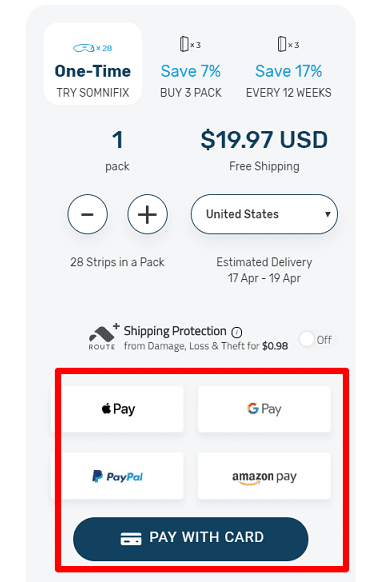

Survey your audience to find out what their best-loved payment methods are.
Having multiple payment methods and getaways allows you to spread your wings globally. Different regions prefer different methods, so the more options you offer, the more areas you cover.
9. Focus on on-page SEO
Most online purchases start when prospects search on Google for possible solutions for their problems.
What does this mean for your store? You must strive to make sure they find your store in their search results through on-page SEO optimization.
Cover the following aspects:
- URL Structure: Use a simple URL structure that’s easy for search engines and people to understand.
- Keyword choice: Pick the right keywords and use them in your headline, site description, alternate image attributes, product titles, and copy. But don’t stuff them; use them naturally.
- Products: Add product categories, descriptions, specifications, and images to make it easy for search spiders to crawl your site and for customers to choose products.
- Simple site architecture: Have a clear, easy-to-understand hierarchy of navigation for your product categories and homepage. Help people find what they are looking for in three clicks or fewer.
Zappos has a simple yet effective site architecture. Done well, on-page SEO can help you rank in search engines and get customers organically.
10. Use live chat
A study by emarketer.com found that more than 60% of consumers would return to a website offering live chat.
Live chat is popular with customers due to the following reasons:
It’s quick and provides a human touch
People love live chat because it is personal. Users get customized solutions fast. No waiting in line. No canned responses. No unanswered phones.
Because of these factors, people prefer live chat to traditional support methods like support tickets, email, or phone. People can even buy right from their messages without leaving the chat!
Here’s a typical live chat scenario:
It creates loyal customers
Live chat provides real-time help for customers to solve problems they have while shopping.
Once you solve customers’ problems, they are happy. Happy customers are loyal and buy repeatedly.
Also, live chat is cost-effective for you because you’re able to solve customer problems faster meaning that your customer service agents are more productive.
Here are the 10 Best Live Chat Software Compared (2022) to help you choose.
11. Allow customers to review products.
Customer reviews are powerful influencers of buyer behavior.
9 out of 10 shoppers read online reviews before they buy a product.
Your product copy makes prospective buyers consider your product, but for the final decision before clicking “buy now,” people look at reviews. Humans gravitate towards groups; that’s why they value the opinions of other people.
Amazon is a master at leveraging the power of reviews.
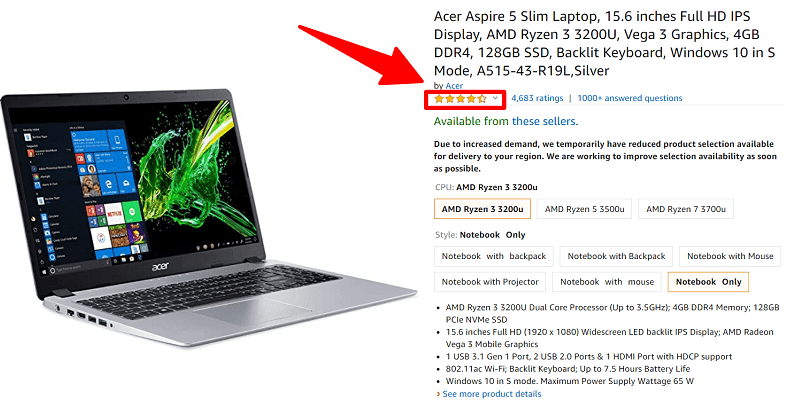

Here’s how to make reviews collection and publication a part of your marketing repertoire.
- Create stellar review-worthy products.
- Ask for reviews while the shopping experience is still fresh.
- Be on the lookout for spontaneous reviews on social media channels.
- Display reviews in strategic places like home pages and product descriptions.
- Bring it all together with an agile review widget like Yotpo.
12. Reduce cart abandonment
Cart abandonment is the ecommerce Achilles heel that can tank conversions. Here are two ways to regain lost sales.
Make saving carts effortless
While online shopping is convenient, it’s prone to distractions.
Life somehow gets in the way. Make saving a cart easy and painless so people can complete their purchase later.
A one-click save button is ideal.
To help shoppers save their carts:
- Urge them to remember their login details in their browser.
- Require registration before they shop.
- Include an easy-to-reach ‘save cart’ button.
Develop a thorough return and refund policy
Customers aren’t sure if the product will turn out as advertised. Can they return it if they don’t like it?
Address these fears by offering them an ironclad, no-questions-asked, money-back guarantee. When you back up your product with solid guarantees, customers are more than willing to buy because they know they won’t lose their money.
13. Build an email list
Email is a profitable channel because it gives you direct access to your customers’ inboxes and cuts your ad spend. Here’s how to optimize your ecommerce email strategy:
Nail the subject line
If prospects don’t open your email, your campaign flops. To increase your email open rate, make your subject line: Clear, specific, short, and enticing.
Use transactional emails
Transactional emails like order confirmations and receipts look mundane, but they improve conversions. An enjoyable post-purchase experience causes customers to like your brand. Such customers buy repeatedly.
Go seasonal
To maximize seasonal sales:
- Suit your copy to the vacation theme.
- Offer generous discounts in your emails.
- Plan and schedule your emails in advance.
- Improve previous vacation emails.
Related: 9 Easy Steps to Building Your Shopify Mailing List
14. Use personalization.
Today’s customers are picky. They demand personalized shopping experiences whenever they shop. 80% of shoppers say they are more likely to buy from a company that offers tailor made experiences.
Related products
An easy but effective way to personalize the shopping experience is to show them products related to products they’ve shown interest in before.
Personalize emails based on behavior
Use artificial intelligence (like the Sendinblue Tracker) to see which product visitors viewed in your store and personalize what they see when they return or when you email them.
Personalize on-site search results
Tap into your customers’ previous activity in your store and show them results related to what they searched for before.
Houzz triggers a pop-up asking visitors to choose topics they like, so they personalize their search.
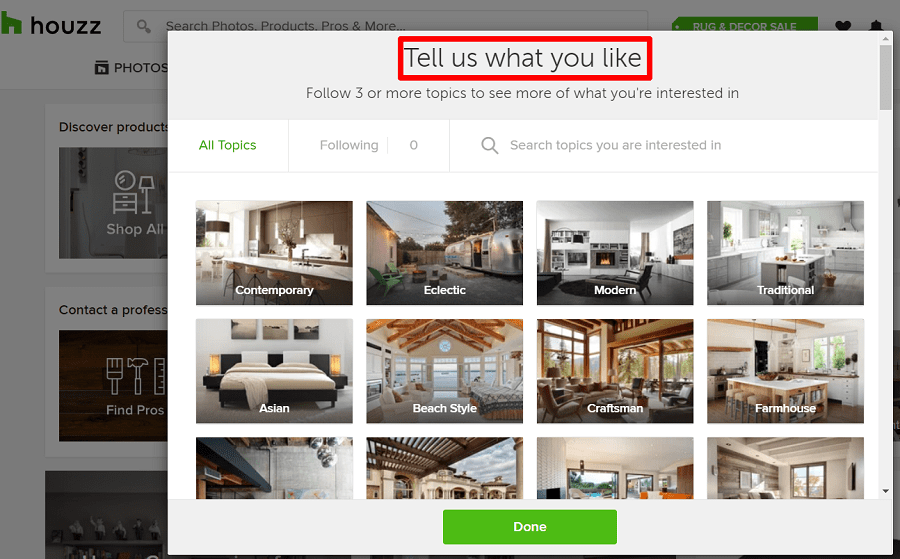

Create an Ecommerce Optimization Audit
To keep your conversions high and ensure you are on track, conduct regular ecommerce optimization audits. Focus on three areas.
1. SEO audit.
In your SEO evaluation, check:
- Image quality: Are all images of high quality?
- Internal linking: Are all related products and categories interlinked?
- Product copy: Is your product copy detailed and unique?
- Out of stock products: Are shoppers redirected to related products when they land on an out-of-stock product page?
An SEO roadmap can help you chart the way forward.
2. Ecommerce platform audit.
For your ecommerce platform assessment, examine:
- User Interface: Is the UX simple and intuitive?
- Speed: Is it designed with speed in mind?
- Mobile responsive: Does it cater for mobile users?
- Wide theme selection: Does it have a broad selection of niche-specific themes to choose from?
3. Conversion rate audit.
For your conversion rates appraisal, scrutinize:
- Checkout process: Is checkout simple, smooth, and fast?
- Product pages: Are they too few or too many?
- Opt-in forms: Do they require only the necessary info?
- CTAs: Are they too big or too small, is the copy wordy or scanty?
Win More Sales with These Ecommerce Optimization Strategies
We trust these ecommerce optimization strategies will put you in a good position to grow your online store.
With these tips in your armory, you stand a chance to prosper even if more people are entering the online business fray.
 Deutsch
Deutsch









